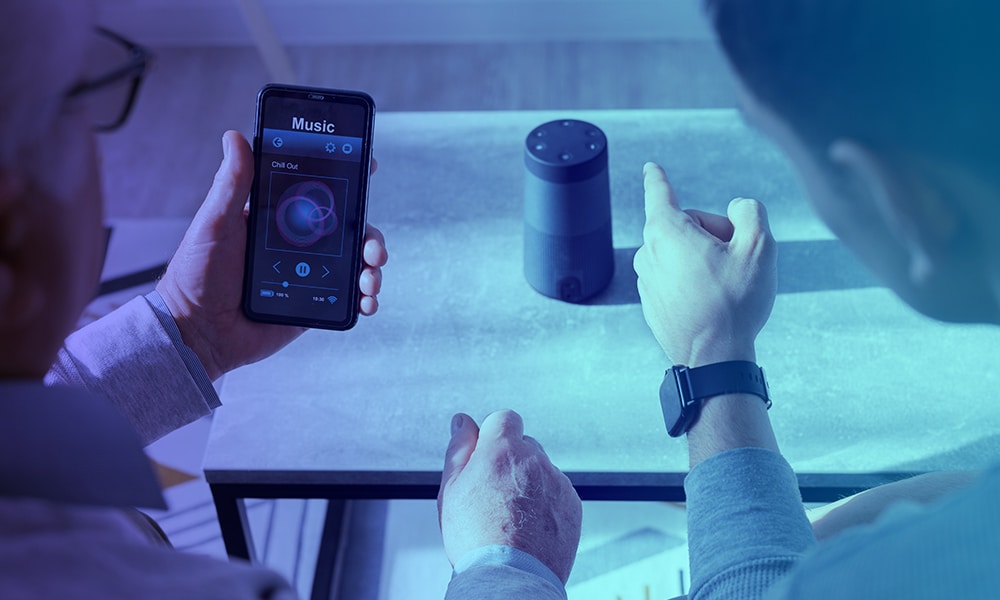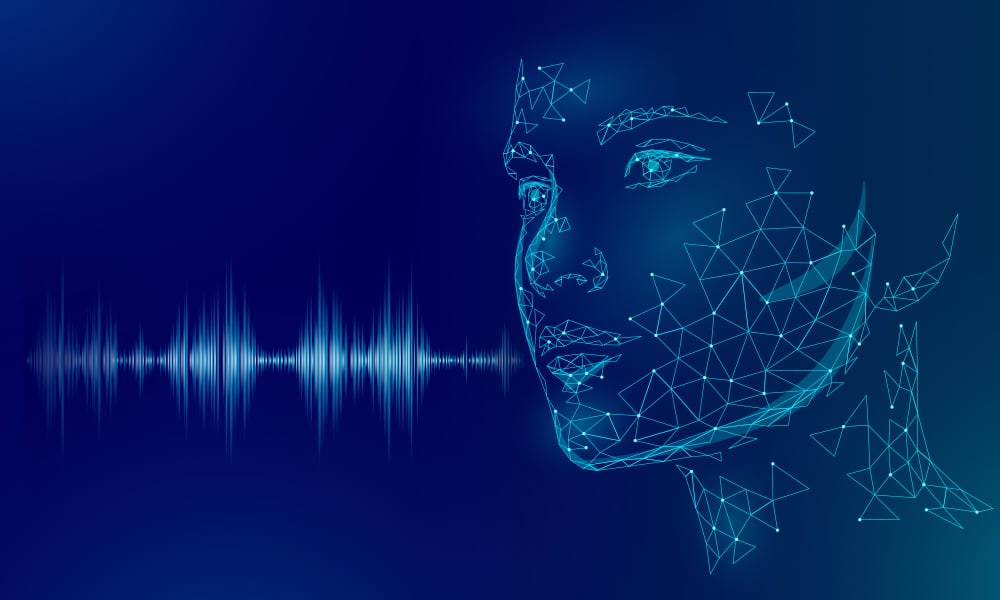A few decades back, if we were to tell someone that we could place an order for a product or service simply by talking to a machine, people would’ve classified us as weird. But today, it’s one such wild dream that has come alive and true.
The onset and evolution of speech recognition technology have been as fascinating as the rise of Artificial Intelligence (AI) or Machine Learning (ML). The fact that we can voice out commands to devices with zero visible interfaces is an engineering revolution, garnering diverse game-changing use cases.
To put things in perspective, over 4.2 billion voice assistants are active today and reports reveal that by the end of 2024, this will double to 8.4 billion. Besides, over 1 billion voice-driven searches are made every month. This is reshaping the way we access information as over 50% of the people access voice search on a daily basis.
The seamlessness and convenience the technology offers have enabled tech experts to strategize multiple applications including:
- Transcription of meeting notes, legal documents, videos, podcasts, and more
- Customer service automation through IVRs – Interactive Voice Response
- Democratize vernacular learning in education
- Voice-assisted navigation and command-executing in-car assistants
- Voice-activated applications in retail for voice commerce and more
As this technology gains increased prominence and dependence, we have to mitigate diverse speech recognition challenges as well. From innate bias in acknowledging and comprehending different accents to privacy concerns, several challenges and concerns need to be weeded out to pave the way for a seamless voice-enabled ecosystem.
Ultimately, the effectiveness of this technology points to AI training and ultimately voice data collection challenges. So, Let’s explore some of the most pressing concerns in this sector.
[Also Read: The Complete Guide to Conversational AI]
Voice Recognition Challenges In 2024
Diversity Of Languages And Accents

Practically, every device is a voice assistant today. From smart televisions and personal assistants to smartphones and even refrigerators, every machine has an embedded microphone and connects to the internet, making it speech recognition-ready.
While this is an excellent example of globalization, it should also be approached in the context of localization. The beauty of languages is that there are innumerable accents, dialects, pronunciations, speed, tone, and other nuances.
Where speech recognition struggles is in understanding such diversity in speech from the global population, this is why some devices struggle to retrieve the right information users are looking for or pull up irrelevant information based on their understanding of voice.
High Costs Of Data Collection

Data collection from real-world people involves heavy investments. The term data collection primarily is all-encompassing and is often only vaguely understood. When we mention data collection and the expenses surrounding it, we also mean efforts in terms of:
- Speech data volume requirements are dynamically dependent on the costs of recording and mastering. Besides, expenses can vary depending on the domain of application, where healthcare speech data can be more expensive than retail voice data primarily due to data scarcity.
- Transcription and annotation expenses involved in turning raw speech data into model-trainable data
- Data cleaning and quality control expenses to remove noise, background sounds, prolonged silences, errors in speeches, and more
- Expenses involved in compensations to contributors
- Scalability issues where costs are escalated over time and more
Time As An Expense In Data Collection

There are two distinct types of expenses – money and money’s worth. While costs point to money, efforts and time invested in gathering voice data contribute to money’s worth. Regardless of the scale of a project, voice data collection involves lengthy timelines in data gathering.
Unlike image data collection, the time required to implement quality checks is more. Besides, there are several factors affecting every okay-tested voice file. This can be time taken to:
- Standardize file formats such as mp3, ogg, flac, and more
- Flagging noisy and distorted audio files
- Classifying and rejecting emotions and tones in voice data and more
Challenges Around Data Privacy & Sensitivity

If you come to think of it, an individual’s voice is part of their biometric. Similar to how facial and retinal recognition serve as gateways to procure access to a restricted point of entry, a person’s voice is a distinct characteristic as well.
When it’s that personal, it automatically translates to an individual’s privacy. So, how do you establish data confidentiality and still manage to keep up with your volume requirements at scale?
When it comes to using customer data, it’s a gray area. Users wouldn’t want to passively contribute to your voice model’s performance optimization processes without incentives. Even with incentives, intrusive techniques can also fetch backlashes.
While transparency is key, it still does not solve the volume requirements mandated by projects.
[Also Read: Automatic Speech Recognition (ASR): Everything a Beginner Needs to Know]
Solution To Fixing Money And Timeline Expenses In Voice Data
Partner With A Voice Data Provider
Outsourcing is the shortest answer to this challenge. Having an in-house team to compile, process, audit, and train voice data sounds doable but is absolutely tedious. It demands innumerable human hours for execution, which also means your teams will end up spending more time doing redundant tasks than innovating and refining outcomes. With ethics and accountability also in the equation, the ideal solution is to approach a trusted voice data service provider like us – Shaip.
Solution To Fix Accent And Dialect Variability
The undeniable solution to this is bringing in rich diversity in speech data used to train voice-based AI models. The wider the range of ethnicities and dialects, the more a model is trained to understand differences in dialects, accents, and pronunciations.
The Way Forward
As we further progress in the path to achieving tech-powered alternate realities, voice models and solutions will only be more integral. The ideal way is to take the outsourcing route to ensure quality, ethical, and massive scales of training-ready voice data are delivered post-quality assurances and audits.
This is exactly what we at Shaip excel at as well. Our diverse range of speech data ensures your project’s demands are seamlessly met and are rolled out to perfection as well.
We urge you to get in touch with us for your requirements.







